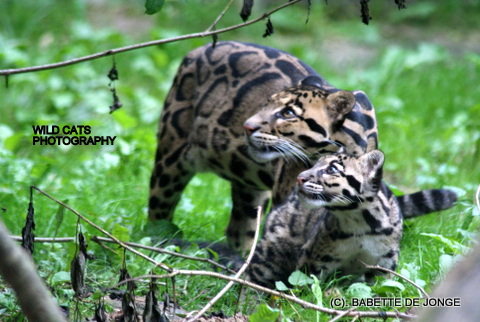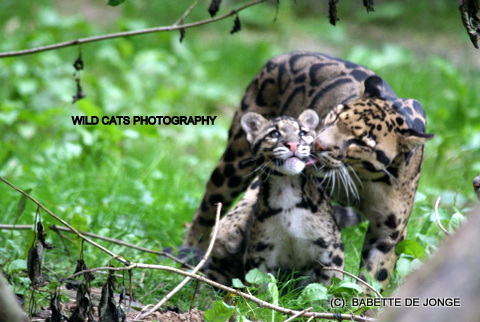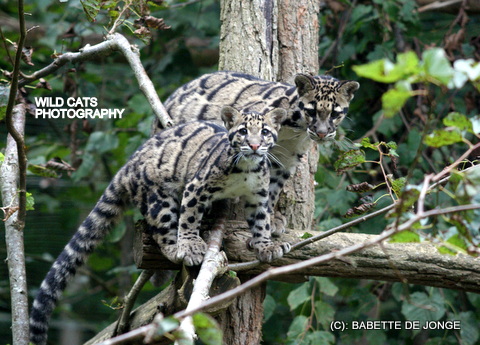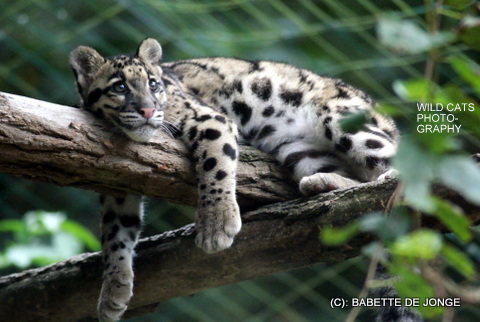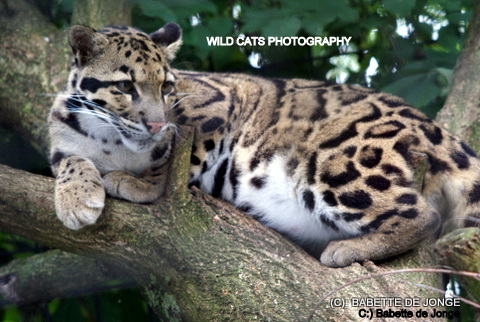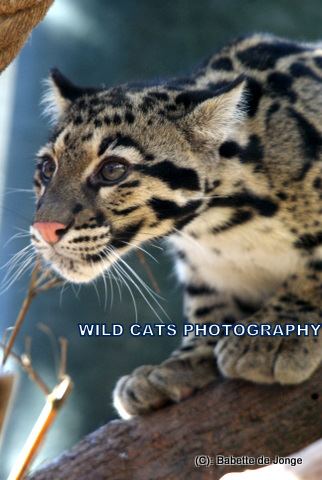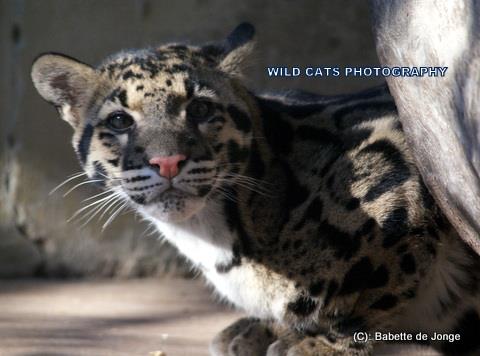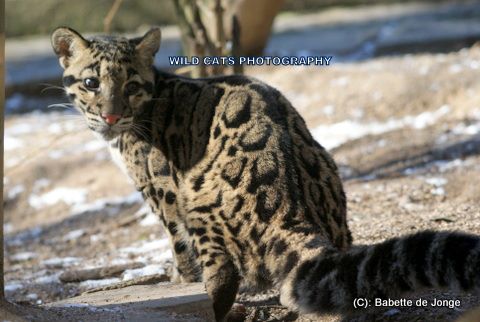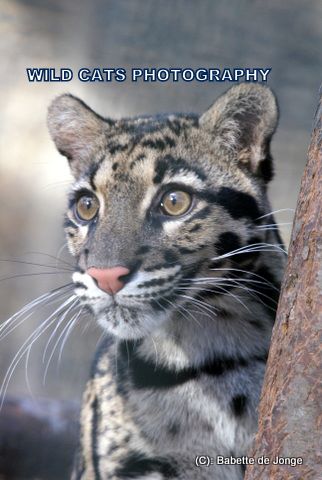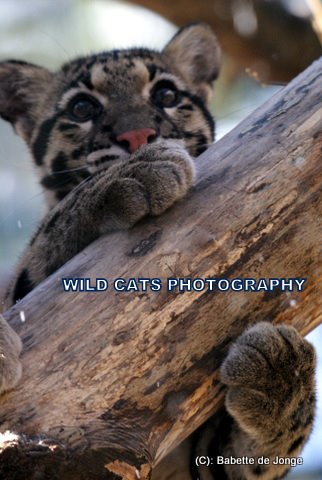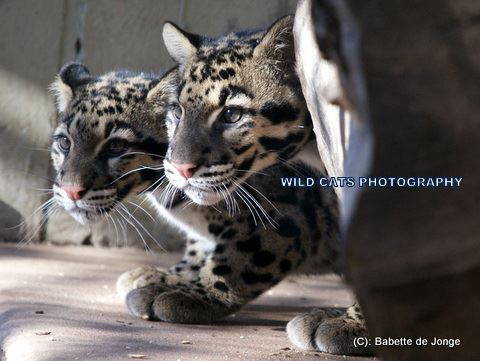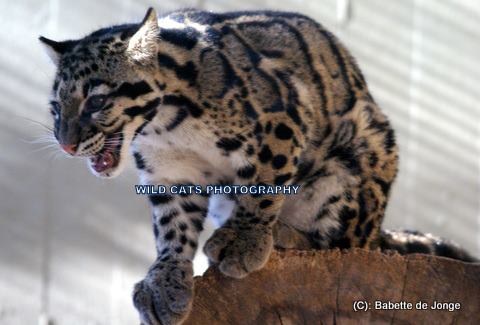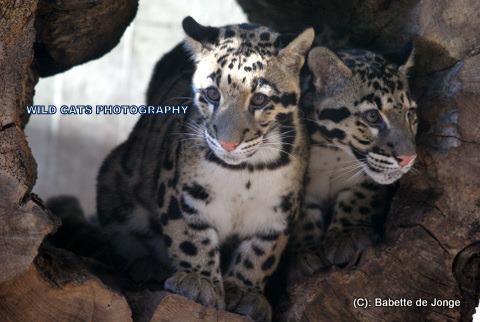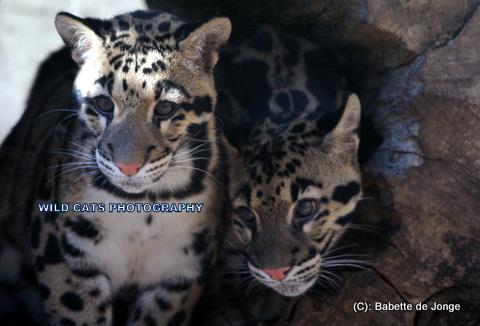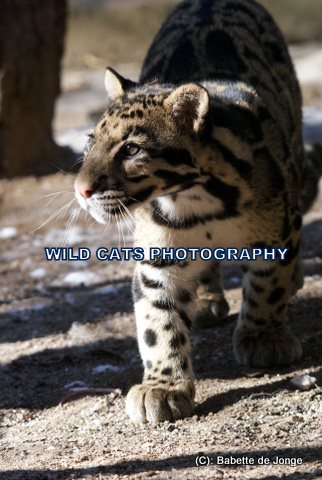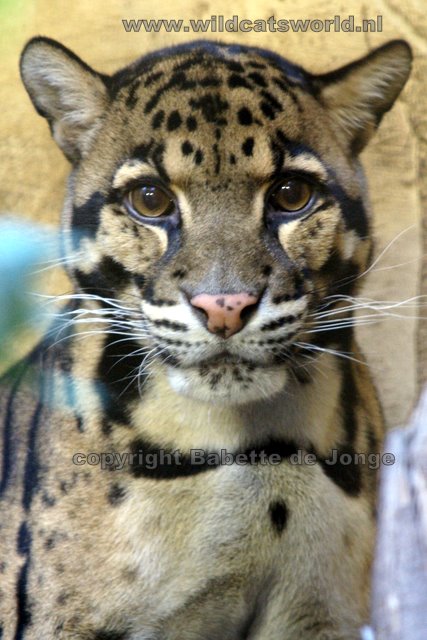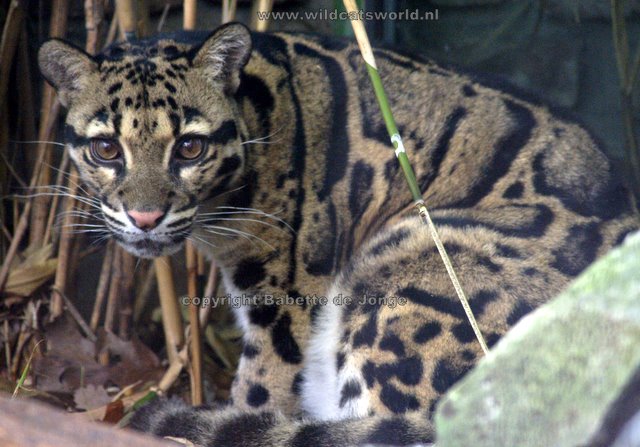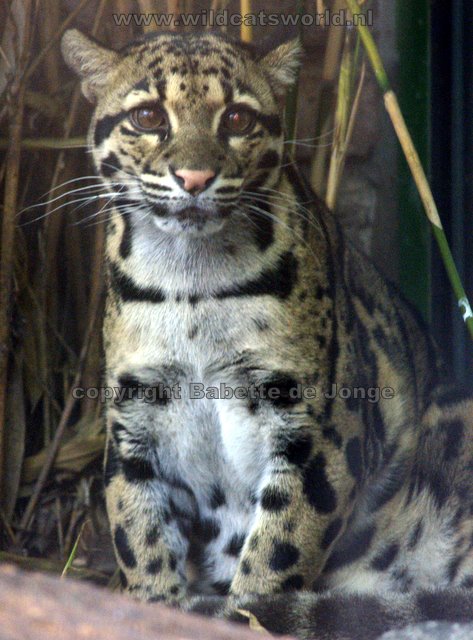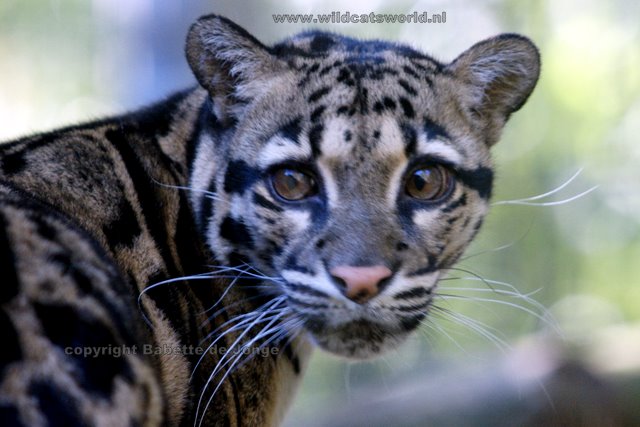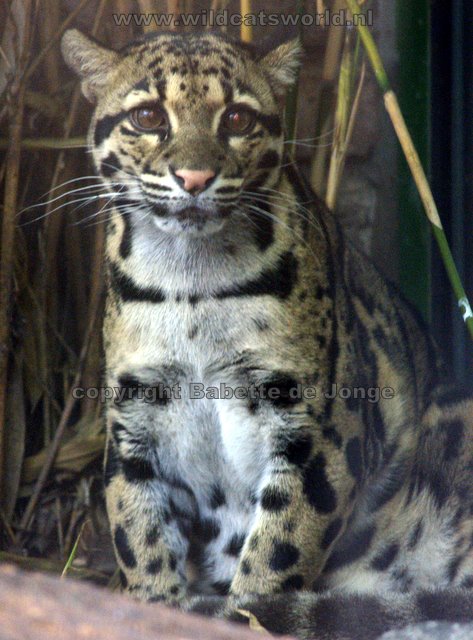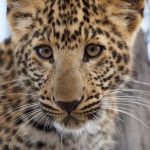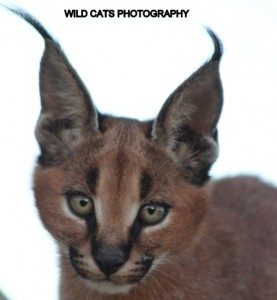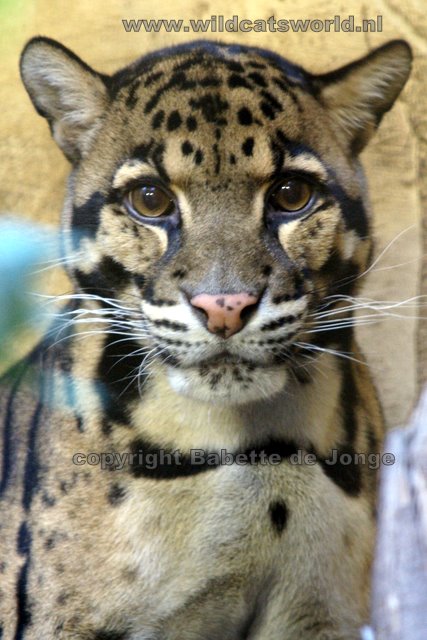
A lot of people consider this mysterious medium-sized cat as the most beautiful one of the family of felines. The Clouded Leopard is found in Southeast Asia and it seems to be a cross between a big cat and a small cat.
The average Clouded Leopard typically weighs between 15 and 23 kg (33 to 50 lb). This medium sized cat has a large build and, proportionately, the longest canine teeth (see photo of the yawning leopard) of any living feline, about the same as a tiger’s, which is a much bigger cat.
Remarkably little is known about the natural history and behavioral habits of this species in the wild. It is now thought though that its primary prey includes arboreal and terrestrial mammals, particularly gibbons, macaques, and civets supplemented by other small mammals, deer, birds,
porcupines, and domestic livestock. Clouded Leopards that are held in captivity also eat eggs and some vegetation.
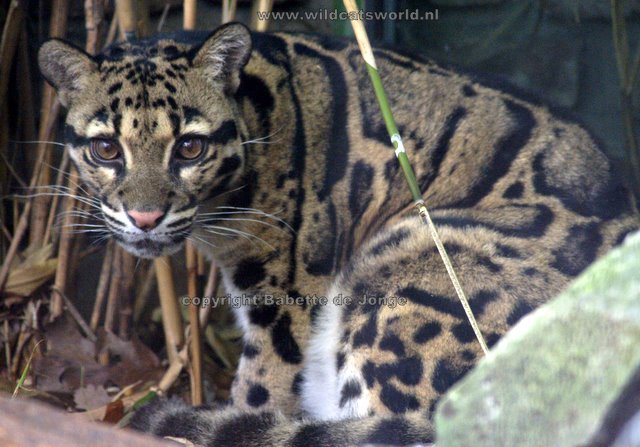
The Clouded Leopard is an excellent climber. Short, flexible legs, large paws, and sharp claws combine to make it very sure-footed in the canopy. The Clouded Leopard’s tail can be as long as its body, further aiding in balance. Surprisingly, this arboreal creature can climb while hanging upside-down under branches and descend tree trunks head-first. In
captivity, the Clouded Leopard routinely hangs by its hind legs using its long tail for balance and runs head-first down tree trunks. Little is known about its behaviour in the wild, but it is assumed from this behavior that a favored hunting tactic is to drop on prey from the trees.
The Clouded Leopard, despite its name, is not closely related to the leopard. The Bornean Clouded Leopard (Neofelis diardi) is a separate species found on Sumatra, Borneo and the Batu Islands in 2007. Because of their distinct skull structure, the two species are considered sufficiently different to be the only members of their genus.
The Clouded Leopard is found only in Southeast Asia and ranges through southern China (at least as far north as Wuyi Shan), the eastern Himalayas, Nepal, northeast India, Bangladesh and Indochina. It is thought to be extinct in Taiwan. The last confirmed sighting of a Clouded Leopard in Taiwan was in 1989 when the skin from a small leopard was found in the Taroko area. This subspecies was characterized by its relatively much shorter tail.
Preferred habitat is tropical and subtropical forests at altitudes up to about 2,000 meters (6,500 ft); however it is sometimes found in mangrove swamps and grassland. It lives in temperatures from 65 to 120 degrees Fahrenheit.
The behaviour of the Clouded Leopard in the wild is virtually unknown to man because of the animal’s reclusive nature. With no evidence for a pack- or pride-society like that of the lion, it is assumed that it is a generally solitary creature. Females give birth to a litter of 2 to 4 cubs after a gestation period of about 85 to 93 days. Initially, the young are blind and helpless, much like the young of many other cats. Unlike adults, the kittens’ spots are “solid”-completely dark rather than dark rings. The
young can see within about 10 days of birth, are active within 5 weeks, and probably become independent at about 10 months of age. The Clouded Leopard reaches sexual maturity at two years of age and females are able to bear one litter each year. Adults in captivity have lived as long as 17 years: in the wild, they have an average 11 year lifespan.
Captive breeding programs met with little success in their early stages, largely due to ignorance of courtship activity among these cats in the wild. Experience has taught keepers that introducing pairs of Clouded Leopards at a young age gives opportunities for the pair to bond and breed
successfully. Introducing pairs as older adults may cause the animals such stress that the male may kill the female. Normally, the Clouded Leopard is not an aggressive animal.
Modern breeding programs involve carefully regulated introductions between prospective mating pairs and take into account the requirements for enriched enclosures. Providing these animal with adequate space to permit climbing stimulates natural behaviour and minimizes stress. This, combined with a feeding programme that fulfills the proper dietary requirements,
has promoted more successful breeding in recent years.
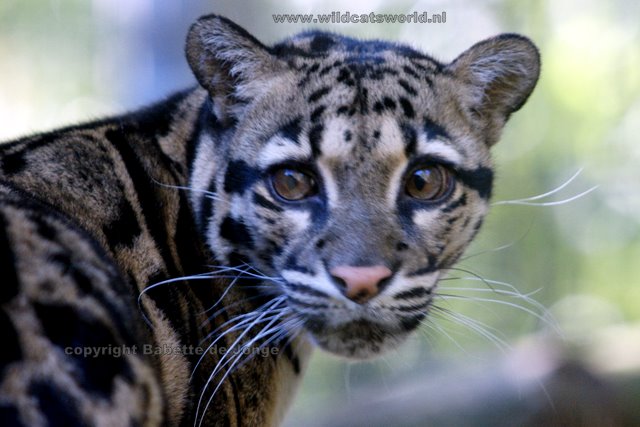
Because the Clouded Leopard’s habits make it difficult to study, reliable estimates of its population do not exist. According to rough estimates fewer than 10.000 individuals might exist. However, the population is declining. Habitat loss due to widespread deforestation and hunting for use in Chinese medicinal preparations are thought to be causing populations of the Clouded Leopard to decline. Only six Clouded Leopards have ever been radio collared and their territorial movements monitored and recorded by scientists using radio telemetry. All of these cats were studied within Thailand. Almost all that is known of the Clouded Leopard today comes from studies of the cats in captivity. Apart from anecdotal accounts very little is known of the Clouded Leopard’s natural history, ecology and behaviour in the wild throughout its range.
The World Conservation Union, the organization that maintains the global Red list of endangered species, lists the Clouded Leopard as Vulnerable. In addition, CITES, the Convention on International Trade in Endangered Species of Wild Fauna and Flora, lists the Clouded Leopard as an Appendix I species, meaning that international trade in Clouded Leopards is banned.
However, these bans are poorly enforced.
